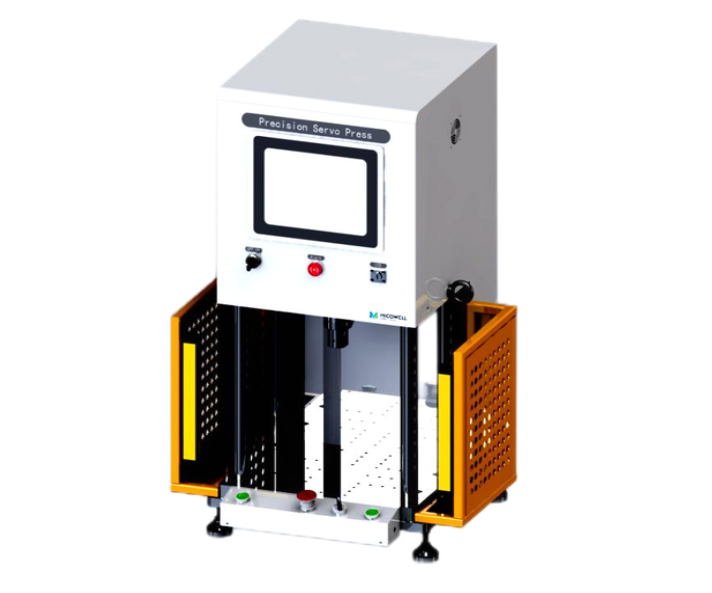In an era where energy efficiency isn’t just a buzzword but a business imperative, optimizing the performance of AC motors has never been more critical. Whether you're managing industrial machinery, HVAC systems, or electric vehicles, the heart of your operation likely relies on these workhorses. But how do you ensure they’re running at peak efficiency? Enter AC motor efficiency testing—a game-changer for reducing costs, enhancing sustainability, and future-proofing your investments. Let’s dive into why this process matters and how it can revolutionize your workflow.
𝐖𝐡𝐲 𝐀𝐂 𝐌𝐨𝐭𝐨𝐫 𝐄𝐟𝐟𝐢𝐜𝐢𝐞𝐧𝐜𝐲 𝐌𝐚𝐭𝐭𝐞𝐫𝐬 𝐌𝐨𝐫𝐞 𝐓𝐡𝐚𝐧 𝐄𝐯𝐞𝐫

AC motors account for nearly 45% of global electricity consumption, according to the International Energy Agency. Even a minor improvement in efficiency can translate to massive savings—both financially and environmentally. Imagine slashing your energy bills by 10-15% simply by ensuring your motors aren’t wasting power through heat, vibration, or subpar design.
But efficiency isn’t just about dollars and cents. With stricter regulations like the EU’s Ecodesign Directive and growing consumer demand for sustainable practices, businesses that ignore motor efficiency risk falling behind competitors. Testing isn’t a luxury; it’s a strategic necessity.
𝐓𝐡𝐞 𝐒𝐜𝐢𝐞𝐧𝐜𝐞 𝐁𝐞𝐡𝐢𝐧𝐝 𝐭𝐡𝐞 𝐓𝐞𝐬𝐭: 𝐖𝐡𝐚𝐭 𝐘𝐨𝐮’𝐫𝐞 𝐌𝐞𝐚𝐬𝐮𝐫𝐢𝐧𝐠

Efficiency testing evaluates how effectively a motor converts electrical energy into mechanical power. Key parameters include:
- 𝐋𝐨𝐬𝐬 𝐀𝐧𝐚𝐥𝐲𝐬𝐢𝐬: Stator and rotor losses, friction, windage, and stray load losses.
- 𝐏𝐨𝐰𝐞𝐫 𝐅𝐚𝐜𝐭𝐨𝐫: The ratio of real power to apparent power, indicating system inefficiencies.
- 𝐓𝐡𝐞𝐫𝐦𝐚𝐥 𝐏𝐞𝐫𝐟𝐨𝐫𝐦𝐚𝐧𝐜𝐞: Heat generation patterns under varying loads.
Advanced labs use dynamometers, precision sensors, and software like MATLAB or LabVIEW to simulate real-world conditions. For example, a motor might be tested at 25%, 50%, 75%, and 100% load to map its efficiency curve. The goal? Identifying “sweet spots” where the motor operates optimally—and flagging redesign needs if performance drops below industry standards like IEC 60034-2-1.
𝐓𝐞𝐜𝐡𝐧𝐨𝐥𝐨𝐠𝐲 𝐃𝐫𝐢𝐯𝐢𝐧𝐠 𝐭𝐡𝐞 𝐅𝐮𝐭𝐮𝐫𝐞 𝐨𝐟 𝐓𝐞𝐬𝐭𝐢𝐧𝐠
Gone are the days of manual calculations and guesswork. Modern testing integrates IoT-enabled devices and AI-driven analytics. Sensors embedded in motors feed real-time data to cloud platforms, where machine learning algorithms predict wear-and-tear or efficiency drops before they cause downtime.
Take predictive maintenance, for instance. By analyzing vibration spectra and temperature trends during testing, engineers can pinpoint bearing wear or rotor imbalances months before failure. This proactive approach reduces unplanned outages by up to 70%, as reported by a 2023 study by McKinsey.
𝐂𝐚𝐬𝐞 𝐒𝐭𝐮𝐝𝐲: 𝐅𝐫𝐨𝐦 𝐖𝐚𝐬𝐭𝐞 𝐭𝐨 𝐖𝐢𝐧
A Midwest-based HVAC manufacturer struggled with rising energy costs and frequent motor replacements. After implementing routine efficiency testing, they discovered that 30% of their motors were operating below 85% efficiency—far under the 92% threshold for IE3 premium classification. By retrofitting these units with optimized windings and high-grade bearings, they achieved:
- 18% reduction in annual energy consumption
- 40% fewer motor failures over two years
- ROI of 1.3 years on testing and upgrades
“We thought our motors were fine because they still turned on,” said the plant’s engineering lead. “Testing revealed hidden inefficiencies we’d never have caught otherwise.”
𝐁𝐞𝐲𝐨𝐧𝐝 𝐂𝐨𝐬𝐭 𝐒𝐚𝐯𝐢𝐧𝐠𝐬: 𝐓𝐡𝐞 𝐁𝐫𝐨𝐚𝐝𝐞𝐫 𝐈𝐦𝐩𝐚𝐜𝐭
Efficient motors don’t just save money—they’re a cornerstone of corporate responsibility. For every 1 kWh saved, approximately 0.92 pounds of CO2 emissions are avoided (based on U.S. EPA averages). In sectors like data centers or manufacturing, where motors run 24/7, efficiency gains contribute directly to sustainability goals.

Moreover, tested and certified motors often qualify for government incentives. Programs like the U.S. Department of Energy’s Better Plants Initiative offer technical assistance and recognition for companies demonstrating measurable efficiency improvements.

𝐂𝐡𝐨𝐨𝐬𝐢𝐧𝐠 𝐭𝐡𝐞 𝐑𝐢𝐠𝐡𝐭 𝐓𝐞𝐬𝐭𝐢𝐧𝐠 𝐏𝐚𝐫𝐭𝐧𝐞𝐫
Not all testing services are created equal. Look for providers that:
- Hold accreditations (e.g., ISO/IEC 17025)
- Offer both lab-based and on-site testing
- Provide actionable reports with clear benchmarks
- Stay updated on evolving standards (e.g., the shift from IE3 to IE4 efficiency classes)
Avoid vendors who deliver generic results without contextual insights. The best partners act as consultants, explaining how findings align with your specific operational goals.
𝐅𝐢𝐧𝐚𝐥 𝐓𝐡𝐨𝐮𝐠𝐡𝐭𝐬: 𝐄𝐟𝐟𝐢𝐜𝐢𝐞𝐧𝐜𝐲 𝐚𝐬 𝐚 𝐂𝐨𝐦𝐩𝐞𝐭𝐢𝐭𝐢𝐯𝐞 𝐄𝐝𝐠𝐞
In a world where margins are tight and expectations are high, AC motor efficiency testing isn’t just about fixing what’s broken—it’s about unlocking potential. Whether you’re a small workshop or a multinational plant, understanding your motors’ true performance is the first step toward smarter energy use, greener operations, and a stronger bottom line.
Ready to take the leap? motor test hear the hum of a motor, ask yourself: Is it working for you… or against you? 🔄💡
[End of Article]
